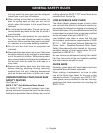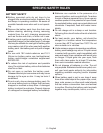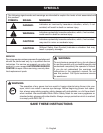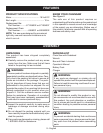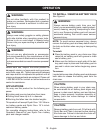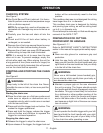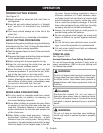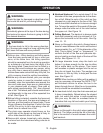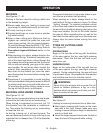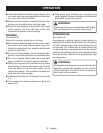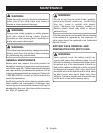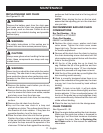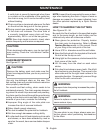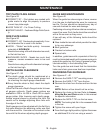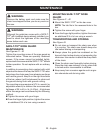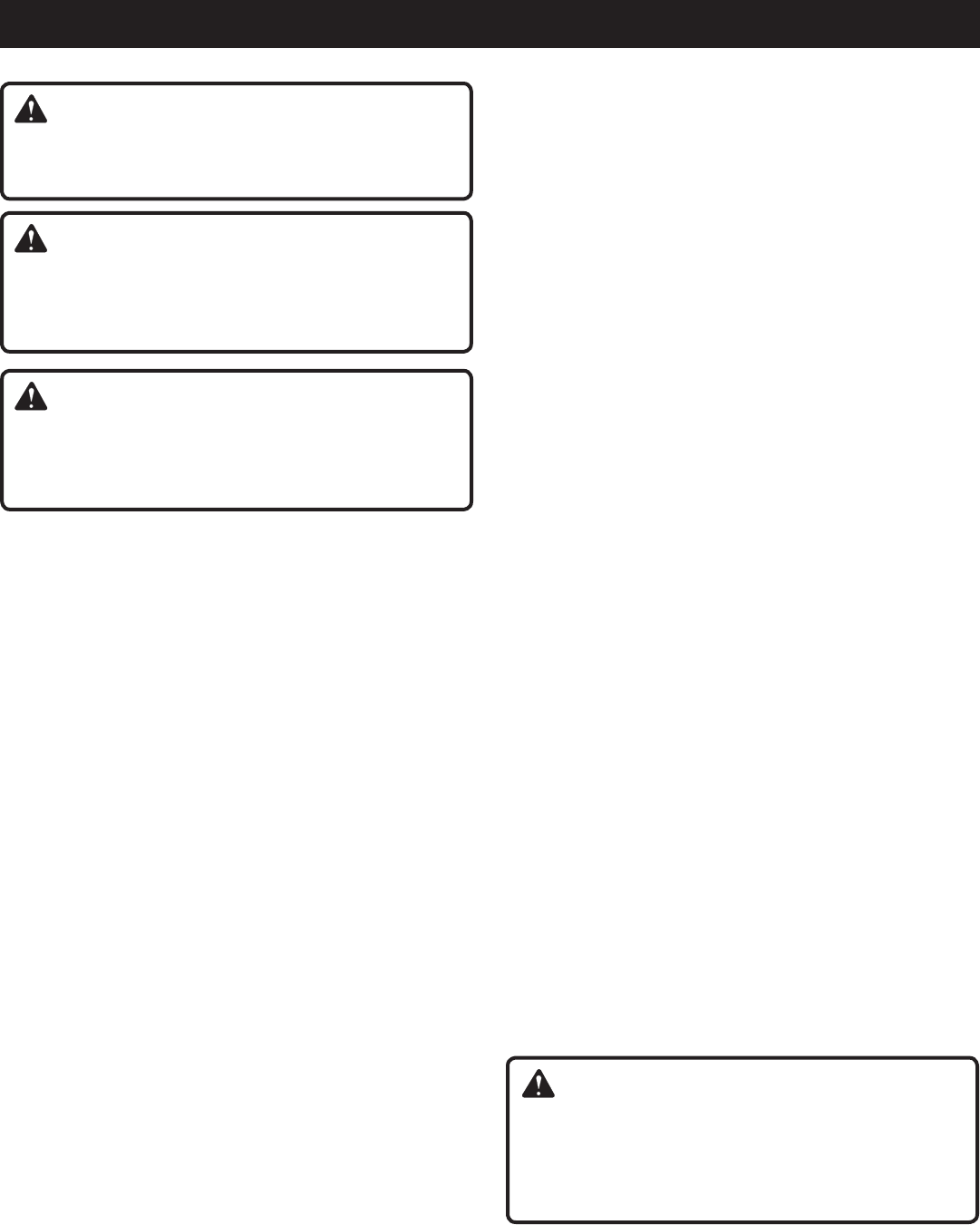
13 - English
OPERATION
Notched Undercut. Cut a notch about 1/3 the
diameter of the tree, perpendicular to the direc-
tion of fall. Make the cuts of the notch so they
intersect at a right angle to the line of fall. This
notch should be cleaned out to leave a straight
line. To keep the weight of the wood off the saw,
always make the lower cut of the notch before
the upper cut. See Figure 14.
Felling Backcut. The backcut is always made
level and horizontal, and at a minimum of 2 in.
above the horizontal cut of the notch. See Fig-
ures 14 - 15.
Never cut through to the notch. Always leave a
band of wood between the notch and backcut
(approximately 2 in. or 1/10 the diameter of the
tree). This is called “hinge” or “hingewood.” It
controls the fall of the tree and prevents slip-
ping or twisting or shoot-back of the tree off the
stump. See Figures 14 - 15.
On large diameter trees, stop the back cut
before it is deep enough for the tree to either
fall or settle back on the stump. Then insert
soft wooden or plastic wedges into the cut so
they do not touch the chain. The wedges can
be driven in, little by little, to help jack the tree
over. See Figure 16.
NOTE: When bucking or felling with a wedge, it
may be necessary to remove the SAFE-T-TIP
®
anti-kickback device to allow the bar to be
drawn through the cut. After the cut is complete,
the tip should be reinstalled immediately.
As tree starts to fall, stop the chain saw and put
it down immediately. Retreat along the cleared
path, but watch the action in case something
falls your way. Be alert for overhead limbs or
branches that may fall and watch your footing.
WARNING:
Never cut through to the notch when making a
backcut. The hinge controls the fall of the tree,
this is the section of wood between the notch
and backcut.
WARNING:
Check the tree for damaged or dead branches
that could fall and hit you during felling.
WARNING:
Periodically glance at the top of the tree during
the backcut to assure the tree is going to fall in
the desired direction.
WARNING:
If the tree starts to fall in the wrong direction,
or if the saw gets caught or hung up during the
fall, leave the saw and save yourself!
Felling a tree - When bucking and felling opera-
tions are being performed by two or more per-
sons, at the same time, the felling operation
should be separated from the bucking operation
by a distance of at least twice the height of the
tree being felled. Trees should not be felled in a
manner that would endanger any person, strike
any utility line or cause any property damage. If
the tree does make contact with any utility line, the
utility company should be notified immediately.
Before any cuts are started, pick your escape
route (or routes in case the intended route is
blocked); clear the immediate area around the
tree and make sure there are no obstructions
in your planned path of retreat. Clear path of
safe retreat approximately 135° from planned
line of fall. The retreat path should extend back
and diagonally to the rear of the expected line
of fall. See Figure 13.
Before felling is started, consider the force and
direction of the wind, the lean and balance of
the tree, and the location of large limbs. These
things influence the direction in which the tree
will fall. Do not try to fell a tree along a line dif-
ferent from its natural line of fall.
The chain saw operator should keep on the
uphill side of the terrain as the tree is likely to
roll or slide downhill after it is felled.
Remove dirt, stones, loose bark, nails, staples,
and wire from the tree where felling cuts are to
be made.



